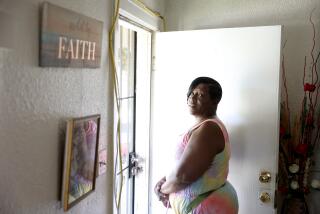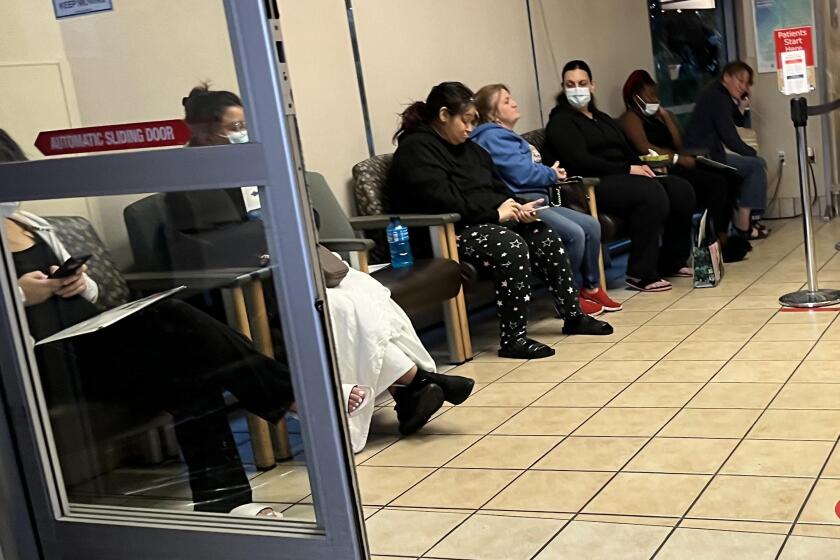Reform the private foster care system, right now
Much of California’s foster care system is private, a result in part of a prevailing political philosophy in the 1980s that the private nonprofit sector could provide better service with better results at a lower cost than government. Over the years, counties referred more of the highest-need children to foster homes selected by and affiliated with private foster care agencies because, it was believed, those homes could provide a more intense level of care and oversight than traditional foster homes, which are individually licensed by the state and contracted directly by counties. In Los Angeles County, five out of six children removed from abusive or neglectful homes and not placed with their grandparents or other relatives now go to homes selected by private agencies.
So it is to be hoped and expected that any study of such agencies and their homes, and the foster children sent to live in them, would find lower levels of abuse than in traditional public foster homes.
A Times analysis and report published last week reached a very different conclusion. It found that children referred to homes by private agencies were a third more likely to suffer abuse as their counterparts in public homes.
TIMES ANALYSIS: Private foster care system, intended to save children, endangers some
The number of abuse cases in either set of homes is quite small. But homes selected by private agencies are supposed to receive extra vetting, plus weekly (instead of monthly) visits by social workers, who generally have much lower caseloads than their public-sector counterparts. If abuse in those homes is actually more frequent than in traditional foster homes, there is something wrong.
The Times’ data team analyzed more than 1 million investigations spurred by calls to child abuse hot-lines, and the story by staff writer Garrett Therolf told of insufficient monitoring and children housed with convicted criminals. Children were abused and even killed in some of these private agency homes, where they had been sent precisely to escape such horror.
The provocative report provides fodder for age-old debates about what’s best for the state’s abused and neglected children. Private care versus public? Rescue of children whose families put them at risk of abuse or neglect, or repair and reunification of those families? More government intervention or less?
States and counties tend to ride a child welfare policy pendulum, swinging between the rescue model — often touted after a high-profile and emotionally searing death of a child at the hands of an abusive parent — to the repair approach, which gains currency after reports of a child death in foster care. That pendulum is also powered by reports of overly aggressive social workers who, it is argued, needlessly remove children from loving homes because the county appears unable to distinguish between abuse and poverty. And it is powered as well by shrinking revenue and government’s need to serve more people with less money. Candidates often campaign on emotional arguments about foster care, and lawmakers introduce bills that are geared toward one swing or the other of the pendulum.
But without switching ideologies or following policy trends, California’s state and county governments have, right now, the ability — and the duty — to do things that might decrease the danger to children, whether they live in private agency foster homes, individually state-licensed homes, with relatives or with their own parents.
State regulators and lawmakers should begin with the waivers granted by the state that allow convicted criminals, who are otherwise ineligible, to become operators of foster care agencies and even to become foster parents. The California Department of Social Services issues the waivers but does not disclose to county child welfare departments who gets them or what the underlying crimes were (convictions for child abuse, sex crimes and violent and most serious crimes are not waivable).
That’s information counties should have at their disposal when determining whether to send a child to any particular private agency home, because they have the responsibility to say yes or no to any placement and to ensure that children sent there remain safe. To do that, they must know all relevant information about the home and the people operating it.
Los Angeles County should consider amending its contracts with private agencies to require them to disclose conviction and waiver information. In the alternative, the law that bars disclosure by the state should be amended to permit the sharing of information with counties.
More fundamentally, the state should analyze its waiver data to determine whether foster parents with criminal convictions in their backgrounds are more likely than other foster parents to abuse children. Any such correlation should be made public, while still protecting individual applicants, so that the state can be assessed on whether it grants too many waivers or if the list of non-waivable crimes should be expanded.
But before a lawmaker precipitously introduces a bill to eliminate waivers, it would be useful to know whether there is actually a greater risk to a child living with someone with a nonviolent conviction. It’s natural to assume so; ideally, society would want each child to live with a well-adjusted family ready to set a good example.
But rather than assuming, let’s find out. Californians need to be able to verify that the state does an acceptable job of screening waiver applicants and approves people who are fit to become foster parents.
More to Read
A cure for the common opinion
Get thought-provoking perspectives with our weekly newsletter.
You may occasionally receive promotional content from the Los Angeles Times.










